How to heat an outdoor patio
There’s no need to let colder weather put ice on your outdoor celebrations. With a little research and planning, you can find the perfect heating solution to keep your guests and outdoor patio comfortable when the weather starts to cool off. Thanks to a wide variety of outdoor living propane heating options on the market—including free-standing heaters, firepits, and tabletop units—there’s a type of heater that will meet your needs. Let’s explore all the ways to heat your outdoor patio with propane.
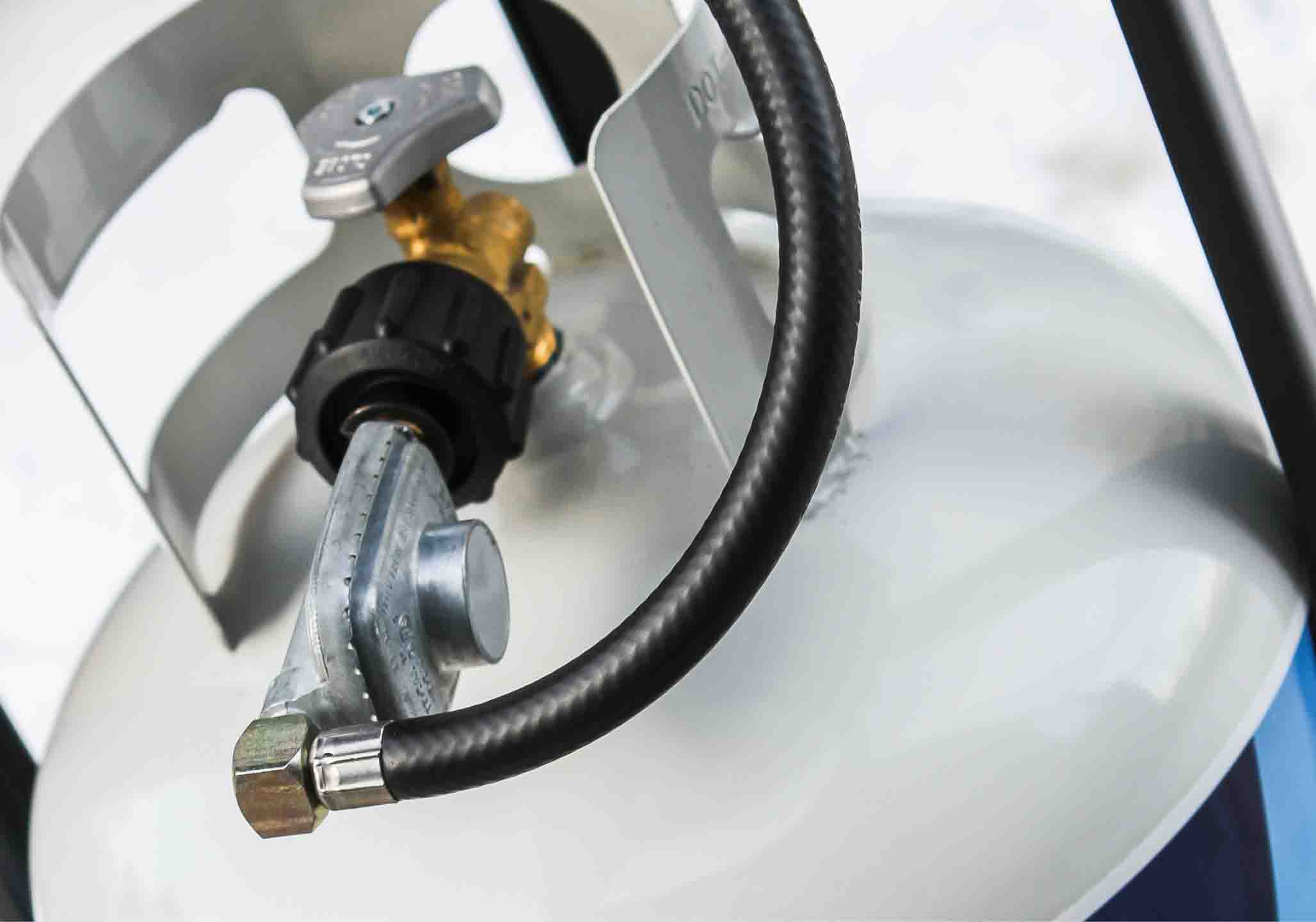 Propane Patio Heaters
Propane Patio Heaters
Propane-powered heaters are favored over electric or gas options due to their portability, reliability, and effectiveness. They can heat large areas quickly and are relatively easy to set up and use. These heaters are perfect for those who want a straightforward solution for outdoor heating.
Types of Outdoor Heaters
There are a variety of outdoor heaters on the market, each with its own advantages and aesthetic appeal. Here’s an overview of the most common options, their best uses, and average heating capacity.
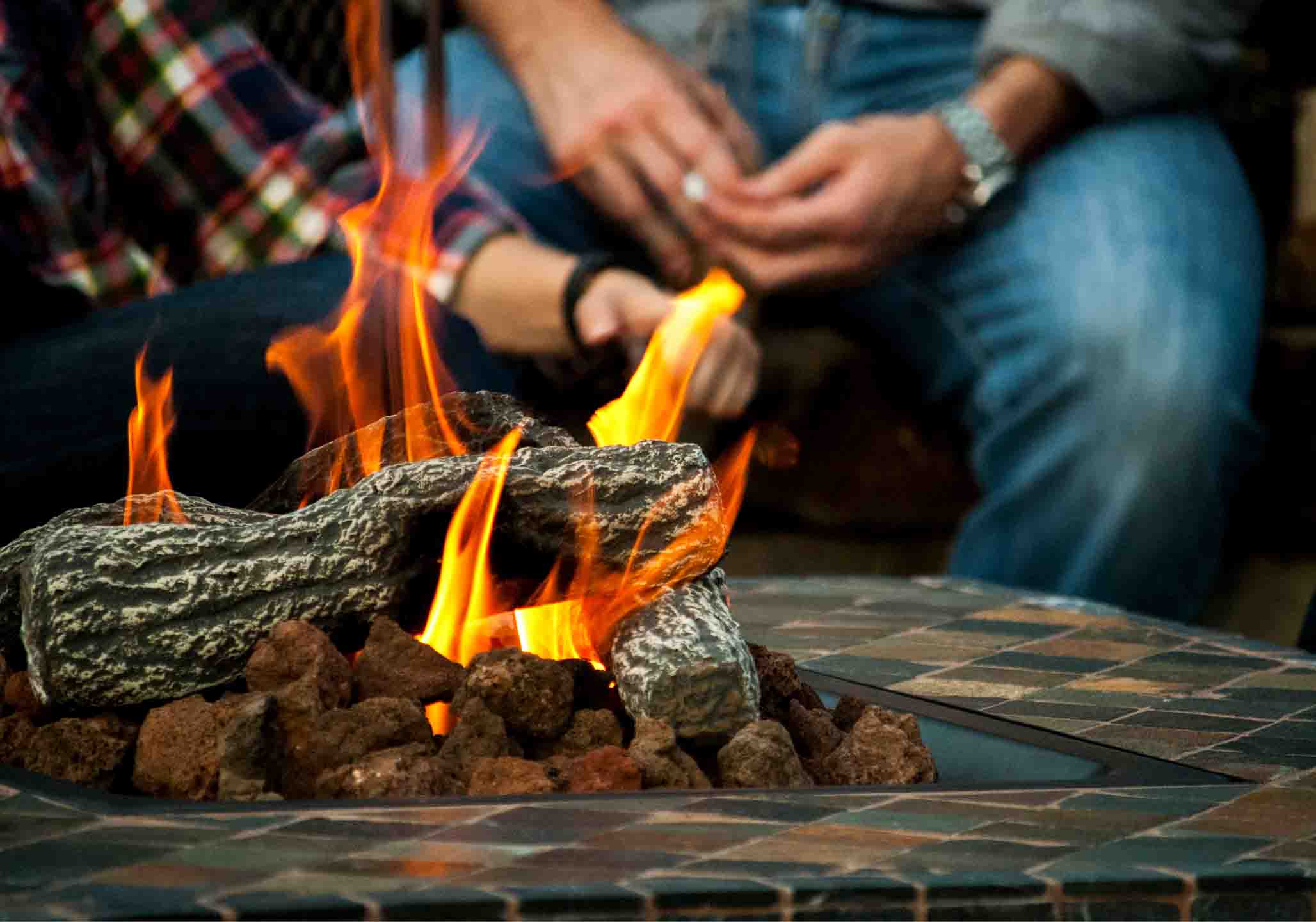 Gas Fire Pits
Gas Fire Pits
Gas fire pits, which are also called fire tables, are a stylish and functional way to add warmth and ambiance to your outdoor patio. Fueled by propane, they create a cozy, inviting atmosphere, making them perfect for gatherings and social events. They offer the aesthetic appeal of a traditional fire pit without the hassle of wood and smoke.
Best Use:
Open, well-ventilated outdoor spaces.
-
Ease of use: Instantly on and off, with no need to feed firewood.
-
No smoke, and no lingering odors on clothing.
-
Acts as a natural gathering place for social activities.
-
Low-cost outdoor heating option during colder months.
Heating Capacity:
Typically, between 30,000 and 150,000 BTUs.
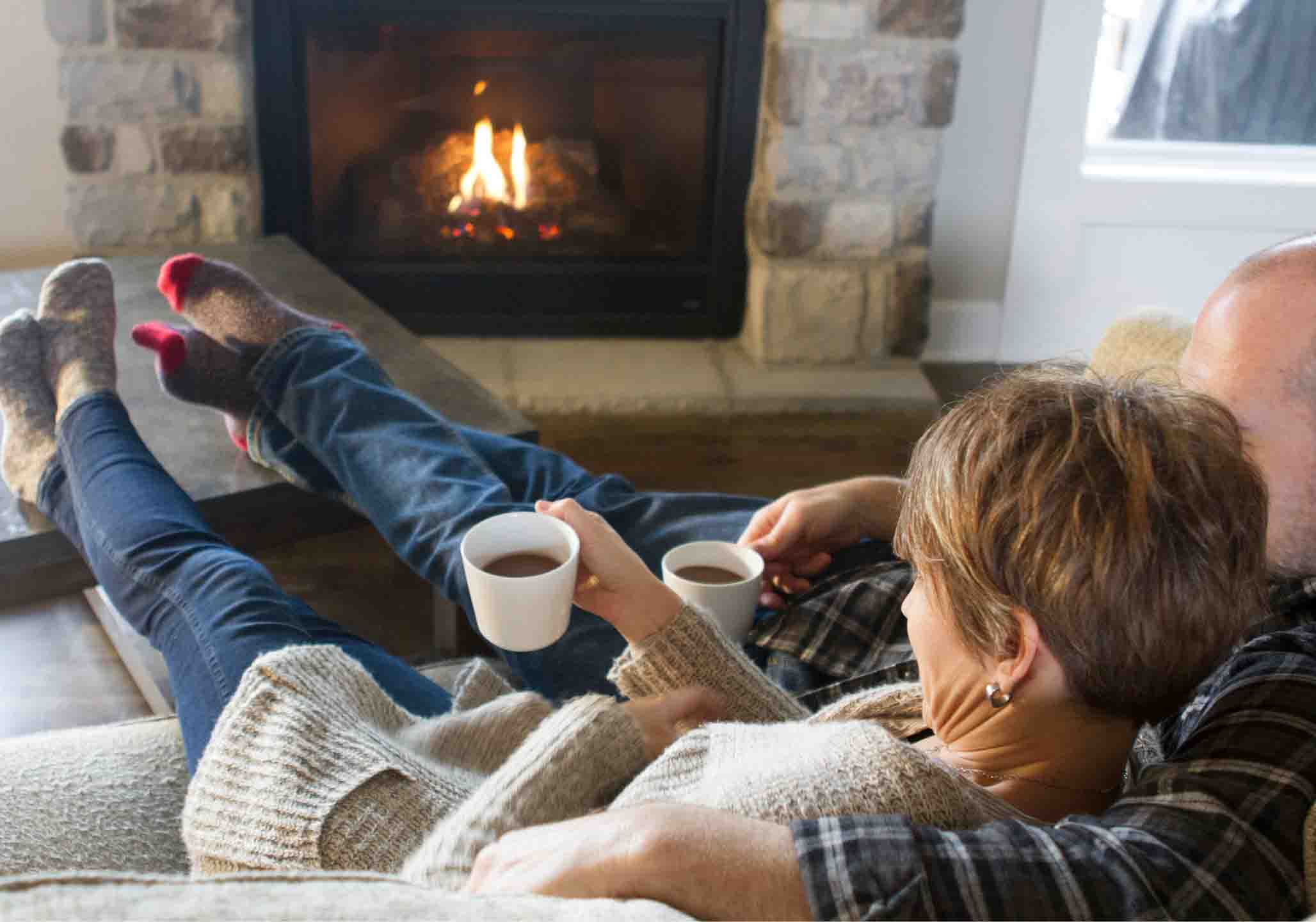 Gas Fireplaces
Gas Fireplaces
Similar to gas fire pits, gas fireplaces provide both heat and a visual focal point for your outdoor space. These units are often built into outdoor walls or as standalone structures. Propane-fueled gas fireplaces are ideal for homeowners looking to create a seamless indoor-outdoor living experience.
Best Use: Outdoors, in well-ventilated areas
Advantages:
-
Provides exceptional warmth and ambiance with a sleek, clean design.
-
Low maintenance with no need for firewood.
-
Cost-effective compared to other heating options, with no rogue sparks.
-
Easy operation, turning off with a flip of a switch.
Heating capacity:
Typically, between 10,000 and 70,000 BTUs, offering heat comparable to (if not higher than) traditional wood-burning fireplaces.
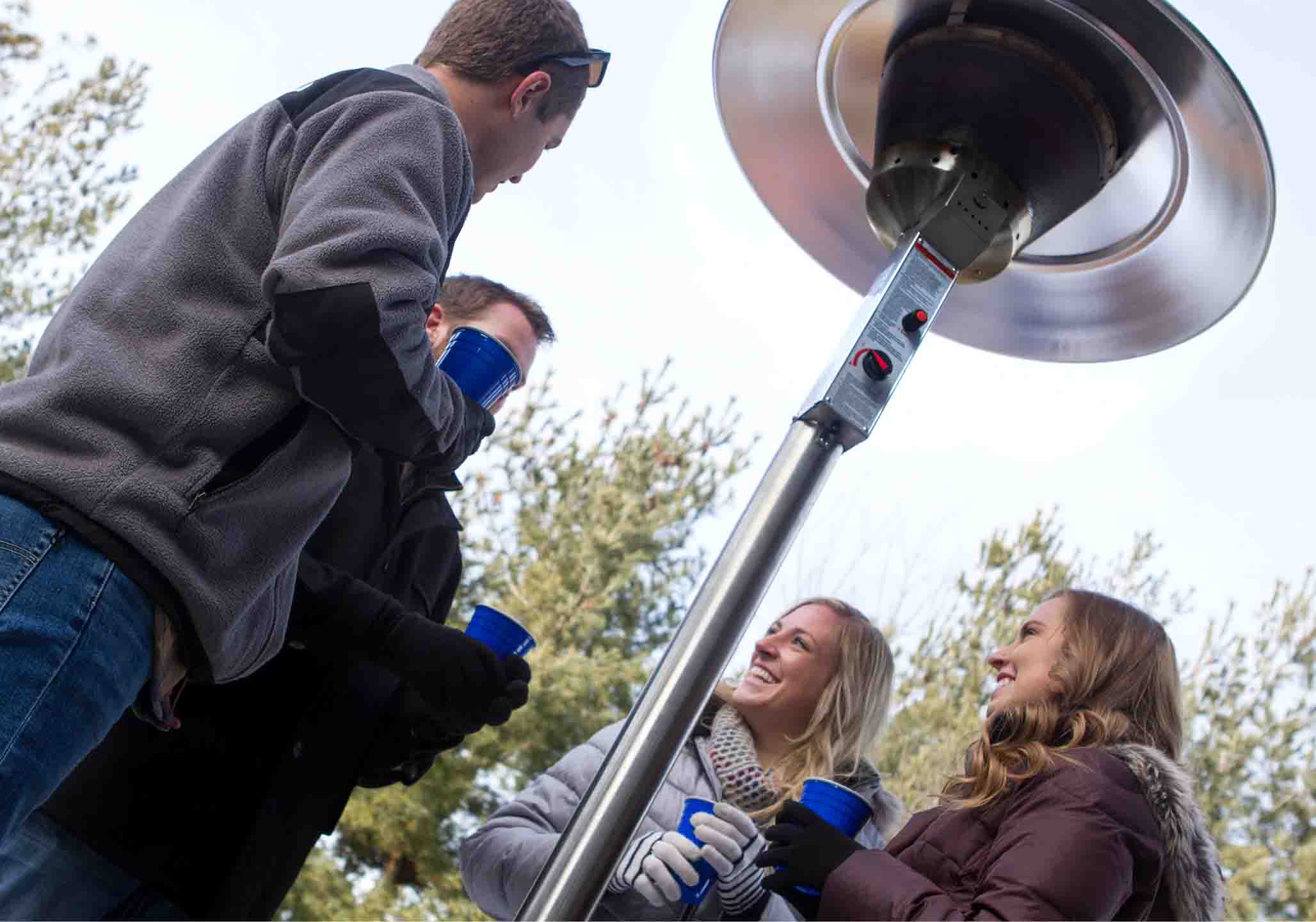 Free-Standing Patio Heaters
Free-Standing Patio Heaters
Free-standing patio heaters are versatile and mobile, allowing for easy relocation to heat large areas. They are ideal for open patios, decks, and commercial outdoor spaces.
Best Use:
Patios, decks, large open spaces, and outdoor restaurant dining areas.
Advantages:
-
Available in various sizes with adjustable heating levels.
-
Simple setup with minimal maintenance required.
-
Grilling-size propane tanks are contained within the heater, which makes fueling them easy.
Heating Capacity:
Most free-standing patio heaters produce up to 40,000 BTUs and distribute even heat across a 20 to 25-foot diameter.
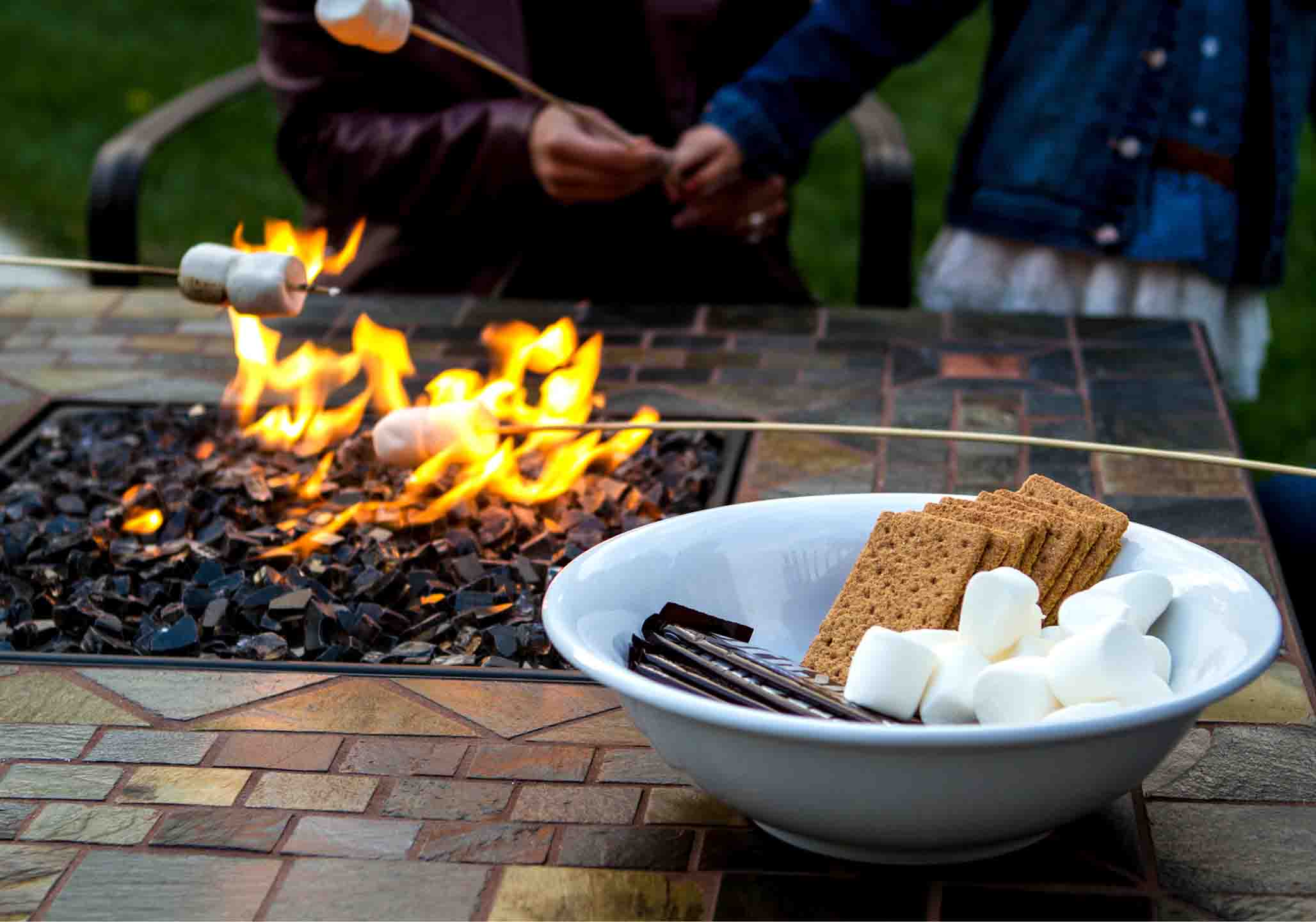 Tabletop Heaters
Tabletop Heaters
Tabletop heaters are compact, making them ideal for small outdoor spaces or dining areas. These propane-fueled heaters are portable and easy to use, perfect for intimate gatherings or cozy dinners outdoors.
Best Use:
Small areas where heat is needed for a limited space or group.
Advantages:
-
Highly portable and affordable, allowing multiple heaters to be used.
-
Versatile placement to provide targeted heat.
-
No need for electricity, unlike electric heaters.
Heating Capacity:
Typically, between 9,000 and 12,000 BTUs.
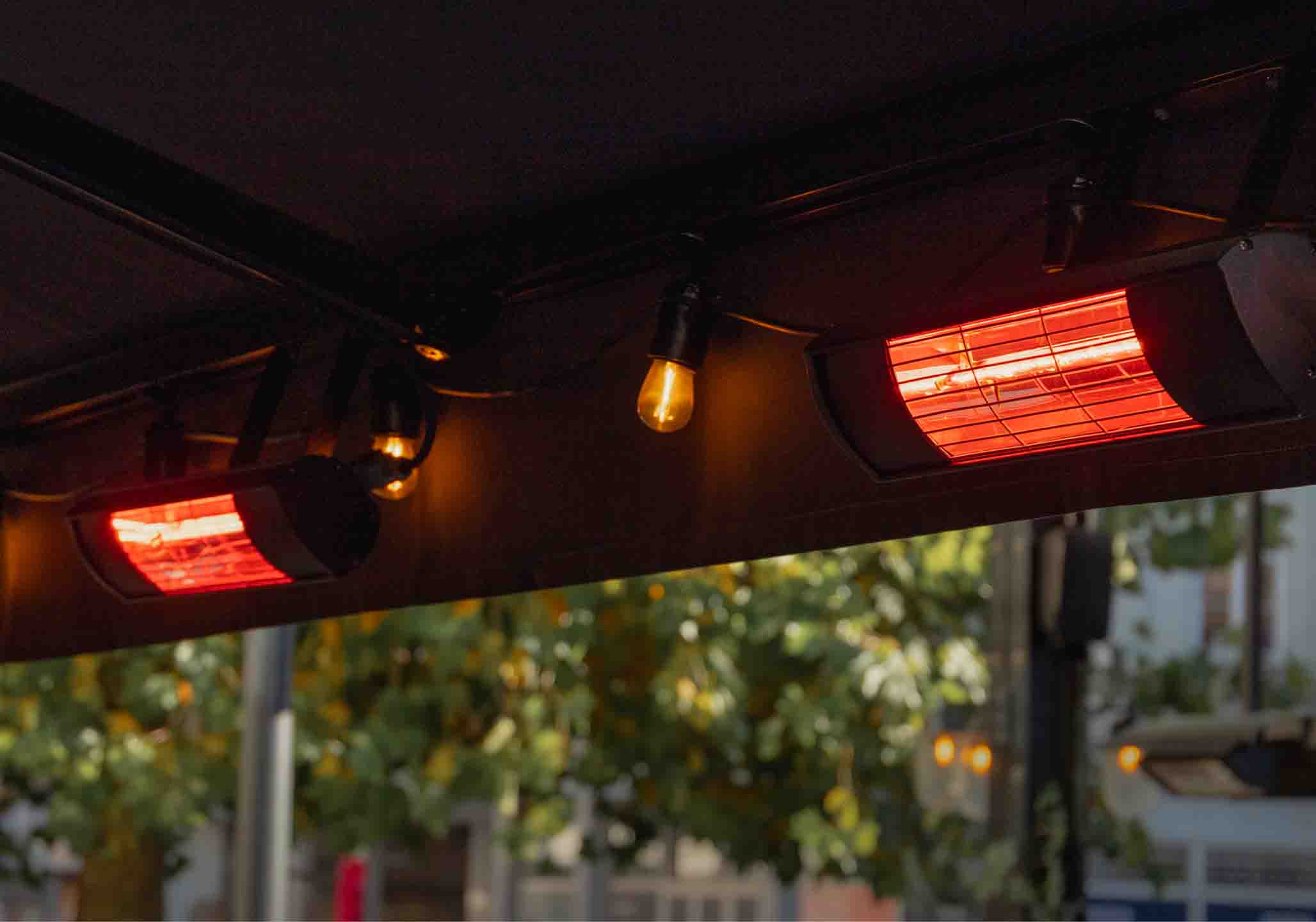 Infrared and Overhead Heaters
Infrared and Overhead Heaters
Infrared and overhead heaters provide targeted heating, making them highly efficient for certain spaces. These heaters, often powered by propane or electricity, can be mounted on walls or ceilings to save floor space while effectively warming specific areas.
Best Use:
Zone heating in areas needing direct heat, such as garages, workshops, and large covered patios.
Advantages:
-
Highly efficient, direct heat that warms objects instead of the air.
-
Low maintenance with built-in safety features.
-
Silent operation with gentle, comfortable heat.
-
Energy-efficient, using less fuel than traditional heaters.
-
Infrared heaters do not dry out the air like other heaters.
Heating Capacity:
Typically, between 22,000 and 60,000 BTUs, with radiant heat fully utilized.
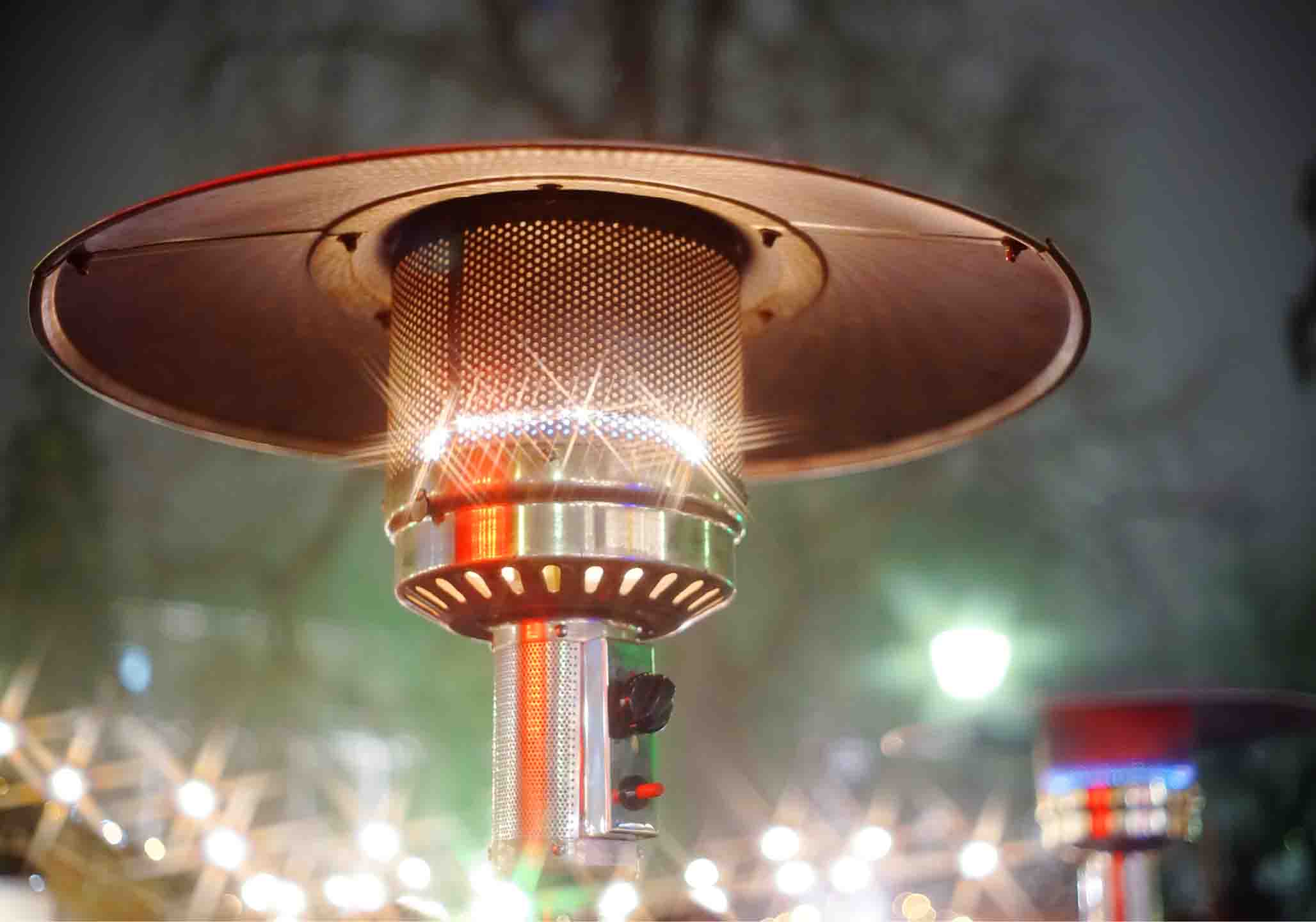 Consider the Outdoor Space You Have
Consider the Outdoor Space You Have
Patio, deck, or the wide-open yard, the layout and size of your space will influence the type of heating solution that works best for you. It’s no surprise that a large area may require multiple heating sources or a more powerful unit to ensure even heat distribution, while smaller spaces can be effectively warmed with a single, appropriately sized heater.
How Many BTUs Do You Need to Heat Your Space?
You’ll need to know the size of the area you plan to heat, a basic understanding of BTUs, and some understanding of local weather trends to determine the size, or number of heaters you’ll need.
Many users will opt for multiple heaters to cover a larger area instead of relying on one large heater to cover the entire area. This creates multiple points of heat to meet specific demands of different events and gatherings.
Use the table below to get an idea of how many BTUs you will need based on the size of your space.
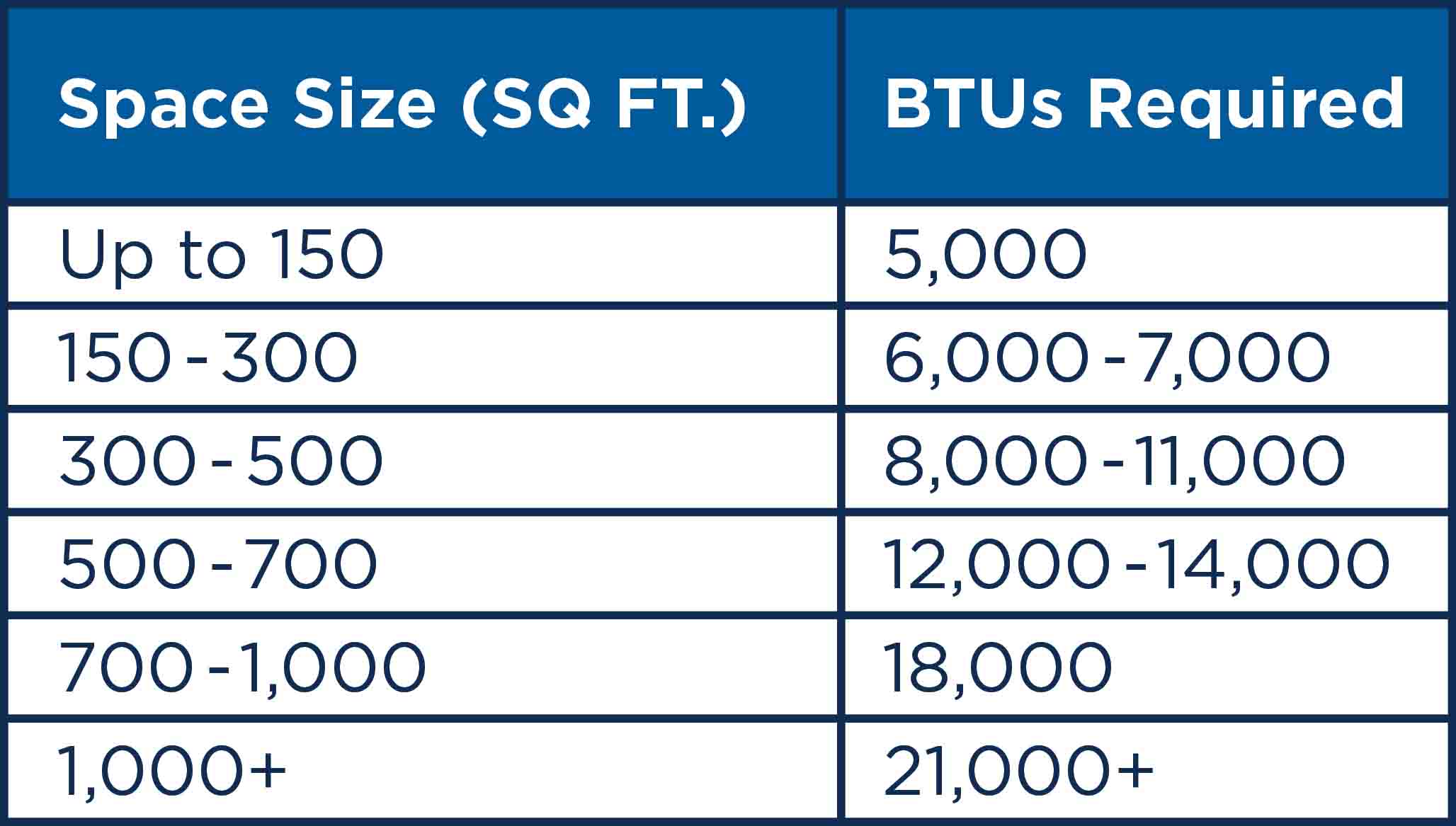 Safe Practices for Outdoor Heating with Propane
Safe Practices for Outdoor Heating with Propane
Safety should always be top of mind when using a propane patio heater. The manufacturer’s user guide provided with your heater will offer valuable, specific safety information, but here are two general safety measures to follow when using a propane patio heater:
- Stable Placement: Ensure that your heating units are placed on stable surfaces away from flammable materials and surfaces before use. This will help prevent accidental tipping and reduce fire risks.
- Weather Awareness: Be mindful of weather conditions, as open flames can be hazardous in windy situations. Wind can cause flames to flare up or even extinguish, posing safety hazards.
Always follow the manufacturer’s guidelines for safe operation and maintenance to ensure a warm and safe outdoor experience. You can also find the Propane Education & Research Council’s guidelines here.
Sources
BTU Calculator, calculator.net
Find the Best Patio Heater for Your Outdoor Space, Lowe’s
Fire Pit BTU 101: Understanding Heat Output for Your Outdoor Space, Fire Pit Surplus
How Many BTU Do I Need for an Outdoor Fire Pit?, Backyard Oasis
How much energy does a fireplace use?, Direct Energy
How to Choose the Right Patio Heater?, Patio Fever
Patio Heater Buying Guide, PatioLiving
Your Guide to Outdoor Patio Heating, Sylvane
CATEGORIES
Archives
- Spring 2025
- Winter 2024
- Fall 2024
- Summer 2024
- Spring 2024
- Winter 2023
- Fall 2023
- Summer 2023
- Spring 2023
- Winter 2022
- Fall 2022
- Summer 2022
- Spring 2022
- Winter 2021
- Fall 2021
- Summer 2021
- Spring 2021
- Winter 2020
- Fall 2020
- Summer 2020
- Spring 2020
- Winter 2019
- Fall 2019
- Summer 2019
- Spring 2019
- Winter 2018
- Fall 2018
- Summer 2018
- Spring 2018
- Winter 2017
